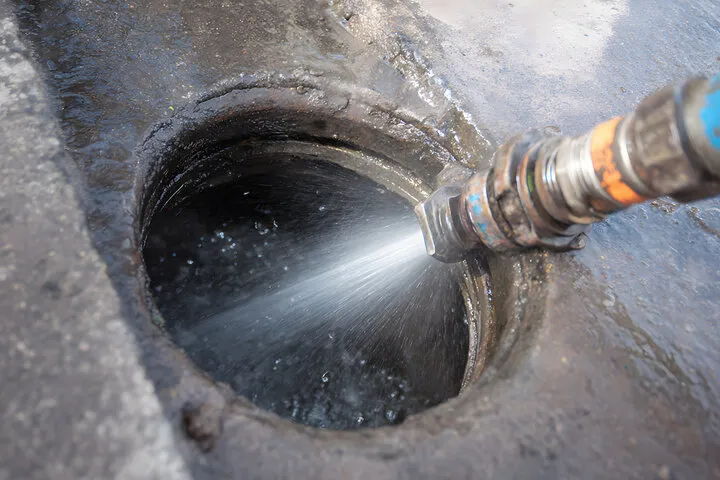Sewer Cleanout in Rancho Cordova, CA
A blocked or failing sewer line can disrupt your home or business, cause property damage, and create health hazards. For Rancho Cordova homeowners and commercial property managers, professional sewer cleanout services restore flow quickly and prevent repeat problems. This page explains the methods we use-hydro jetting, mechanical snaking, and root cutting-the step-by-step process from diagnosis to verification, emergency response for backups, maintenance options, and how to tell when a full repair or replacement is necessary.
Why sewer cleanout matters in Rancho Cordova, CA
Rancho Cordova’s hot, dry summers and wetter winters produce seasonal soil movement that stresses older sewer pipes. Many local neighborhoods have mature trees whose roots seek moisture and invade joints in clay or older PVC sewer lines. Commercial kitchens and restaurants in the area also introduce grease, oil, and food solids that contribute to mainline blockages. Regular, targeted sewer cleanouts protect properties from backups, odors, and costly repairs down the road.
Common sewer cleanout issues in Rancho Cordova
- Root intrusion from oak and ornamental trees causing slow drains and recurring clogs
- Grease and FOG (fats, oils, grease) buildup in commercial lines and residential kitchen drains
- Flushable wipes and debris that accumulate and compact in the mainline
- Mineral or scale buildup in older pipes reducing interior diameter
- Collapsed or shifted pipes from seasonal ground movement or aging pipe materials
Cleaning methods we use
- Hydro jetting: High-pressure water streams scour pipe walls, removing grease, scale, sludge, and light root growth. Best for thoroughly cleaning mainlines and restoring full flow.
- Mechanical snaking (augering): Effective for localized blockages and clearing debris or compacted waste. Fast and efficient for many residential clogs.
- Root cutting: Specialized rotating cutters or mechanical root saws remove intrusive roots from joints. Often combined with camera inspection to assess the extent of intrusion.
Each method is selected based on diagnosis, pipe material, blockage type, and whether long-term prevention is the goal.
Step-by-step service process
Initial diagnosis
- Technician evaluates symptoms (slow drains, gurgling, backups) and inspects accessible cleanout points. Information about plumbing layout and recent work is noted.
Camera inspection (where applicable)
- A sewer camera is sent into the line to locate the blockage, identify pipe condition, detect cracks, bellies (sags), root intrusion, or offsets, and determine the best cleaning approach. Video provides the factual basis for recommendations.
Targeted cleaning
- Based on findings, we perform hydro jetting, snaking, and/or root cutting. For commercial grease issues, tailored jetting patterns and grease management techniques are used. Work is done to minimize disruption and protect landscaping and hardscape.
Verification and documentation
- After cleaning, a follow-up camera pass confirms clearance. Before-and-after video and images document the results and help decide if repairs are needed.
Cleanup and sanitation
- Work areas are left clean. Wastewater and debris are contained and disposed of properly following local regulations.
Emergency response for backups
Sewer backups are an urgent health and property concern. Emergency response protocols prioritize rapid diagnosis and temporary measures to stop overflows, followed by targeted cleaning or containment. For severe backups, short-term mitigation (temporary pumps, bypasses) is used while a permanent solution is implemented. Response times and available resources vary, but emergency cleanouts focus on preventing property damage and restoring service quickly.
Residential and commercial capabilities
- Residential: Mainline cleanouts, lateral jetting, root cutting near homes, camera inspections for home sewer lines, and maintenance plans for high-risk properties.
- Commercial: Heavy-duty hydro jetting for restaurants and food service, grease trap coordination, scheduled maintenance to prevent operational downtime, and rapid emergency response to protect business continuity.
Expected timelines and site cleanup
- Typical diagnostic camera inspection: 30–60 minutes
- Cleaning time: from under an hour for a simple residential clog to several hours for complex mainline root removal or heavy grease buildup
- Verification camera and documentation: 15–45 minutes
Technicians take care to protect landscaping and hardscape; any residue is removed and the working area is cleaned and sanitized. Before-and-after camera footage and a written summary of findings are provided so you can see exactly what was done.
Maintenance plan options to prevent future blockages
- Scheduled cleanouts and jetting: Frequency based on tree proximity, age of pipes, and household or business usage (annually or semiannually for high-risk sites).
- Targeted root control: Mechanical removal combined with periodic monitoring to limit regrowth.
- Grease control plans for businesses: Regular jetting intervals and coordination with kitchen staff on best practices to minimize FOG entry into the mainline.
- Camera inspection cycles: Periodic video inspections to catch early signs of pipe deterioration or developing blockages.
Membership-style plans and financing options are commonly available to spread preventive care across the year and reduce the risk of emergency work.
When repair or full replacement may be necessary
Cleaning restores flow but cannot fix structural failures. Consider repair or replacement when camera inspection shows:
- Significant pipe collapse, cracks, or crushed sections
- Multiple offsets or severe bellies causing chronic pooling and blockage
- Recurrent root intrusion through failing joints in older clay pipe
- Repeated major backups despite regular cleanings
In these cases, options include spot repairs, pipe lining (trenchless repair), or full pipe replacement depending on location, condition, and long-term cost-effectiveness.
A precise diagnosis and the right cleanout method save money and prevent recurring plumbing emergencies. In Rancho Cordova, where tree roots, seasonal soil movement, and local commercial activity influence sewer performance, a tailored maintenance strategy-backed by camera documentation and proactive cleanouts-keeps your plumbing reliable. Regular inspections, sensible disposal habits (avoid grease and wipes), and scheduled mainline maintenance are the best defenses against costly sewer failures.
Other Services
Customer Testimonials
See what our satisfied customers have to say about their experience with Always Affordable
Plumbing & HVAC.






